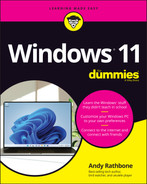Chapter 19
Strange Messages: What You Did Does Not Compute
IN THIS CHAPTER
![]() Understanding notifications
Understanding notifications
![]() Deciphering security messages
Deciphering security messages
![]() Responding to messages on the desktop
Responding to messages on the desktop
Error messages in real life are fairly easy to understand. A blinking digital clock means you need to set the time. A parked car’s beep means that you’ve left your keys in the ignition. A spouse’s stern glance means that you’ve forgotten something important.
But Windows error messages may have been written by a Senate subcommittee, if only the messages weren’t so brief. The error messages rarely describe what you did to cause the event or, even worse, how to fix the problem.
In this chapter, I’ve collected some of the most common Windows error messages, notifications, and just plain confusing attempts at conversation. Find a message that matches what you’re experiencing and then read how to handle the situation as gracefully as Windows will allow.
Add Your Microsoft Account
Meaning: Although the messages in these windows may be worded slightly differently, they all mean the same thing: You must sign in with a Microsoft account to perform your desired task. If you don’t have a Microsoft account, you see the message in Figure 19-1. As described in Chapter 2, Microsoft accounts let you reap the most benefits from Windows.
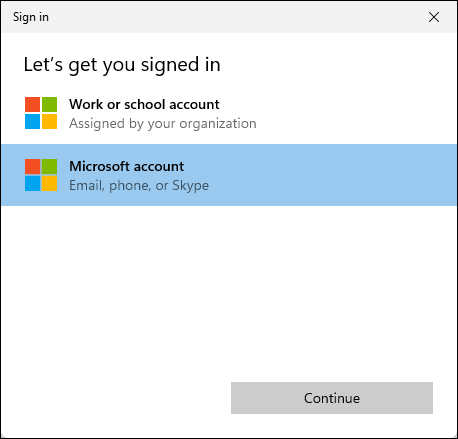
FIGURE 19-1: To take advantage of some Windows features, you must create a Microsoft account.
Probable causes: You may have tried to buy an app from the Microsoft Store, access OneDrive from the internet, or activate the Windows Family Safety controls, which all require a Microsoft account.
Solution: Sign up for a free Microsoft account, as I describe in Chapter 2.
Calendar Notifications
Meaning: When your upcoming appointment is happening soon, Windows sends the message in Figure 19-2.
Probable cause: You’ve entered an appointment into the built-in Calendar app, and Windows is reminding you that it’s coming up soon. This is one of many notifications that pop up in the screen’s lower-right corner.
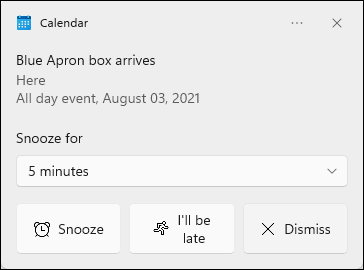
FIGURE 19-2: Choose between the offered options.
Solutions: Most people prefer seeing reminders about their appointments. But if the sheer number of notifications begins disturbing you after a while, feel free to turn them off. I explain how to pick and choose which apps can send notifications in Chapter 12.
Choose What Happens with This Device
Meaning: Windows wants to know what to do with the device you’ve just plugged into your computer, so the message shown in Figure 19-3 appears in your screen’s lower-right corner.

FIGURE 19-3: Click to tell Windows how to react whenever you connect that device with your computer.
When you click the window in Figure 19-3, the window in Figure 19-4 appears in the screen’s upper-right corner.
Probable causes: You just slid a flash drive (a stick of memory) into your computer’s USB port, attached a phone or camera, or connected another device to your computer.
Solution: Choose how you want Windows to react when you reconnect that device in the future. You can always change this decision by visiting the Settings app’s Bluetooth and Devices page and choosing AutoPlay from the right pane. Click any listed device, and a drop-down menu lists all your choices. (I prefer the Ask Me Every Time option, when it’s available, so I can choose the action I prefer at each particular moment.)

FIGURE 19-4: Tell Windows what to do with the item you’ve just inserted into your computer.
Deleted Files Are Removed Everywhere
Meaning: When you delete a file from OneDrive, your online storage space, it will no longer be available to your other devices. To remind you, Windows sends the message in Figure 19-5.
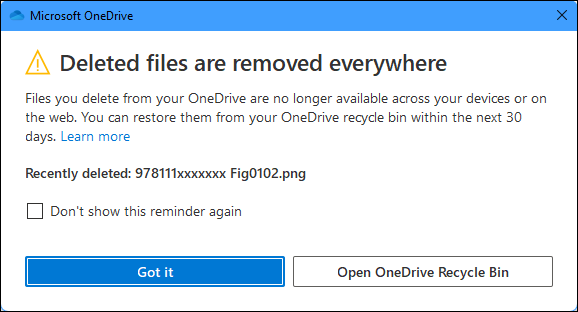
FIGURE 19-5: Deleting files from OneDrive removes them from the OneDrive folder of all your devices.
Probable cause: You’re deleting a file that’s stored on OneDrive.
Solutions: Feel free to delete the file from OneDrive if you no longer need it there. Just be sure to keep a copy on the PCs that need to have it. I explain the intricacies of OneDrive in Chapter 5. (If you delete a OneDrive file, it goes to the OneDrive Recycle Bin, where it stays for 30 days.) To retrieve a mistakenly deleted file, click the message’s Open OneDrive’s Recycle Bin button, select the mistakenly deleted file, and click the Restore button.
Did You Mean to Switch Apps?
Meaning: Your currently viewed app is trying to open another app. Windows shows you the message in Figure 19-6 to make sure the app isn’t trying to do anything evil.
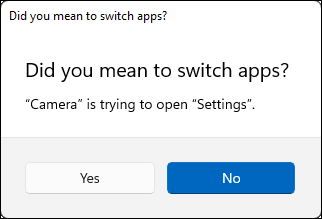
FIGURE 19-6: Click Yes unless you think the app is trying something sneaky.
Probable cause: You’ve clicked a link inside one app that requires another app to handle the job.
Solution: Unless you think the app is trying to install a virus or do something bad, click the Yes button to approve the job.
Do You Want to Allow This App to Make Changes to Your Device?
Meaning: Are you sure that this software is free from viruses, spyware, and other harmful things?
Probable cause: A window similar to the one shown in Figure 19-7 appears when you try to install downloaded software or a driver for one of your computer’s parts. In this case, Microsoft’s security program simply wants to open a program to see if it’s safe.
Solutions: If you’re sure the requested action is safe, click the OK, Yes, or Install button. But if this message appears unexpectedly or you think it may not be safe, click the Cancel, No, or Don’t Install button. I cover safe computing in Chapter 11.
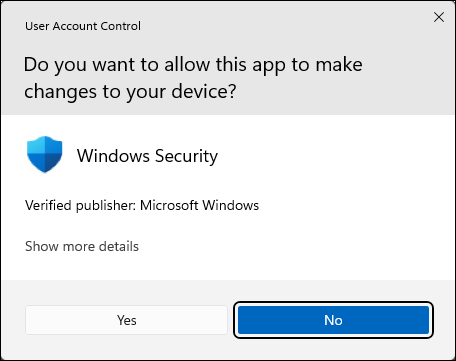
FIGURE 19-7: Do you think this software is safe?
Do You Want to Pin This App to the Taskbar?
Meaning: An app is trying to pin itself to the taskbar, that strip of icons along the bottom of your screen.
Probable cause: Some newly installed apps aren’t content to simply add themselves to the Start menu. They want to hog some space on the taskbar, as well. So Windows asks for your approval by displaying the window shown in Figure 19-8 before allowing that to happen.
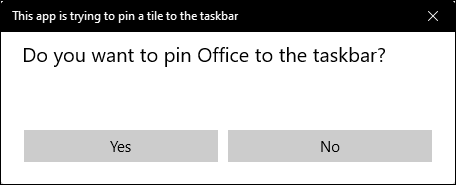
FIGURE 19-8: Should this app be allowed to appear on the taskbar?
Solutions: If you think you’ll be using the app frequently, and there’s room for it on the taskbar, click Yes. Otherwise, click No. You can always pin the app there later, as I describe in Chapter 3.
Do You Want to Save Changes?
Meaning: You haven’t saved your work in a program, the program is about to close, and your work is about to be lost.
Probable causes: The window in Figure 19-9 appears when you’re trying to close an application, sign out, or restart your computer before telling a program to save the work you’ve created.
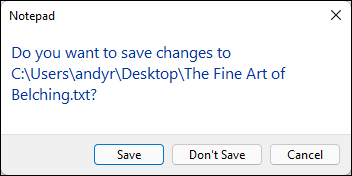
FIGURE 19-9: Do you want to save your work?
Solutions: Click the Save button to save your work and let the program close. I cover saving files in Chapter 6. Don’t want to save the file? Then click Don’t Save to discard your work and move on. Or, if the cat stepped on the keyboard, click Cancel to stymie the cat’s mischief and return to normalcy.
Enter Network Credentials
Meaning: Windows isn’t letting you access a particular file or folder, so it sends Figure 19-10.
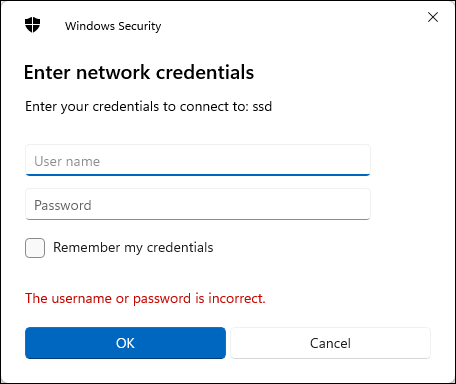
FIGURE 19-10: Enter your user account and password to continue.
Probable cause: You’re trying to access a file or folder on a network or another user account where you don’t have permission.
Solutions: Ask the owner of that user account or networked computer to give you permission to access the file, a process I cover in Chapter 15. Then, when you enter your user account and password, Windows will let you see the folder or file. Still see the message? Double-check to make sure you’ve entered your username and password correctly.
How Do You Want to Open This File?
Meaning: The window in Figure 19-11 appears when you need to give an app permission to carry out an action.
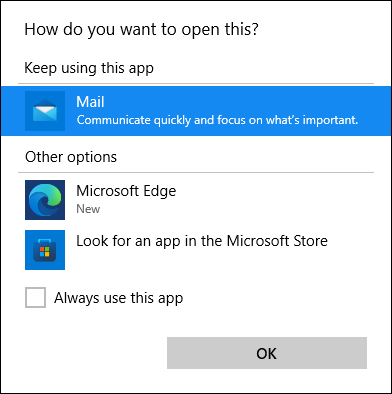
FIGURE 19-11: Windows doesn’t know what program should open this file.
Probable cause: Windows apps and programs often fight over the right to open your files. To make sure that the right program is opening your file, Windows displays this message for you to confirm that the correct program is handling the job.
Solutions: If the correct program is listed as opening your file, click the Always Use This App checkbox, and then click the OK button. Windows won’t bug you the next time you open that type of file. The message reappears the next time you open a different type of file, however. If the wrong program is trying to open the file, click or tap the correct program from the message’s list.
If Windows doesn’t offer any valid suggestions, however, click the Look for an App in the Store option. (I cover this problem in Chapter 6.) To open the file, you may need to download or buy an app from the Microsoft Store.
Keep These Display Settings?
Meaning: Are you able to view what you see onscreen, and does it look the way you want?
Probable cause: Windows sends up Figure 19-12 as a safeguard when you change your display settings, perhaps to change the resolution so that more information will fit onto the screen.
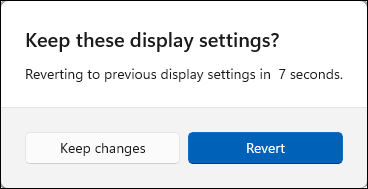
FIGURE 19-12: Windows wants to make sure your recent display changes worked correctly.
Solutions: If everything looks fine onscreen, click Keep Changes, and Windows sticks with the newly changed display settings. If you don’t click anything, Windows assumes the changes have made your display unreadable, so it jumps back to the last settings that worked.
Let’s Finish Setting Up
Meaning: Figure 19-13 is Microsoft’s way of making sure you know about all the new features in Windows 11. And that includes some features you may have to pay for down the road.
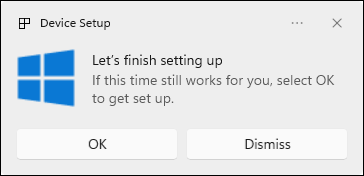
FIGURE 19-13: Windows 11 wants to finish introducing its new features.
Probable cause: Owners of new or recently upgraded computers see this a lot.
Solutions: Click Remind me Later to put off the task; click Continue to run through the screens. I click the No Thanks button at each screen. You can always turn on the features later if and when you need them. If you want to revisit them, click the Get Started app from the Start menu’s All Apps section.
No Usable Drive Found
Meaning: The message in Figure 19-14 tells you that the Windows backup program, File History, isn’t working.
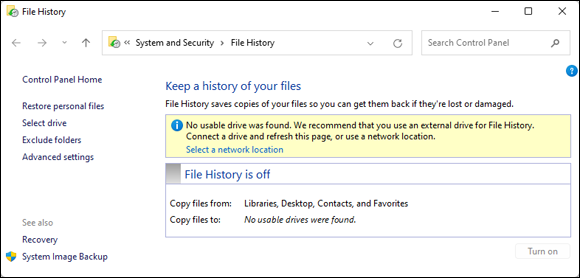
FIGURE 19-14: Your backup drive or card isn’t plugged in to your computer.
Probable cause: File History was saving your files on a portable hard drive, flash drive, or memory card that’s no longer plugged in to your computer.
Solutions: This message appears most often on laptops and tablets after you’ve taken them on the road, leaving your backup drive at home. So find your portable hard drive, flash drive, or memory card, and plug it back into your computer. (If File History doesn’t begin working again, revisit the File History section in Chapter 13 to make sure the settings are correct.)
After you plug the drive back into your computer, File History thoughtfully makes a fresh backup of everything that hasn’t yet been saved.
Save to OneDrive
Meaning: Windows wants to store your files automatically on OneDrive, so it sends the message in Figure 19-15.
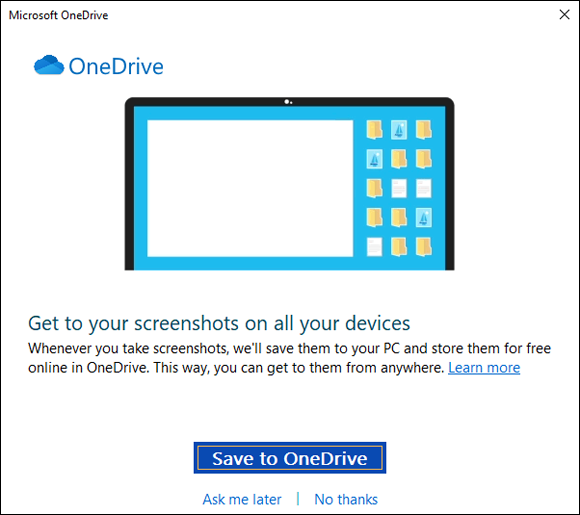
FIGURE 19-15: Do you want to save your screenshots to OneDrive?
Probable cause: You’ve pressed ![]() +PrtScrn to take a screenshot — a picture of what’s on the screen. Normally, Windows stores the screenshot file in the
+PrtScrn to take a screenshot — a picture of what’s on the screen. Normally, Windows stores the screenshot file in the Screenshot folder that resides within your Pictures folder. But Windows wants you to store them instead on OneDrive, your online storage space.
Solutions: Click Yes if you need to access those screenshots from any devices or web browser. But click No if you’ll only access them from your own PC. That prevents OneDrive from eventually running out of room, and Microsoft from asking you to pay for more storage.
Select to Choose What Happens with Removable Drives
Meaning: Windows sends the message shown in Figure 19-16 when it wants to know what to do when you plug a hard drive or flash drive into your computer’s USB port.
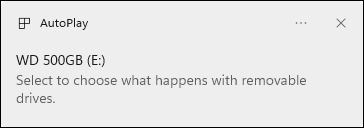
FIGURE 19-16: Windows wants to know what to do with a new drive.
Probably cause: You’ve plugged a new hard drive or flash drive into your computer’s USB port.
Solution: You can just ignore the message, and it will go away with no harm done. If you click it, Windows lets you choose between three actions:
- Configure Storage Settings: This opens the Settings app’s Storage settings, few of which have to do with portable drives. (Previously, Windows would offer to let you use the drive as a backup device.)
- Open Folder to View Files: The most likely choice, this lets you view the contents of your newly plugged-in drive.
- Take No Action: Choose this, and Windows stops sending you pointless messages like this. Then, when you want to see what’s inside the drive, you can open File Explorer to view the drive’s contents.
Threats Found
Meaning: When the built-in Windows antivirus program finds a potentially dangerous file on your computer, it lets you know with the message in Figure 19-17. Windows then removes the file so it can’t harm your computer or files.
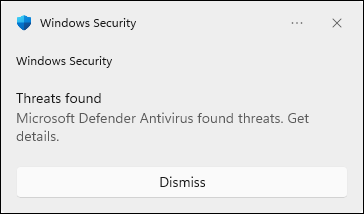
FIGURE 19-17: Microsoft Defender Antivirus has found and removed a potentially dangerous file on your computer.
Like most notifications, this one always appears in the screen’s lower-right corner.
Probable cause: A potentially dangerous file — malware — probably arrived through email, a flash drive, a networked computer, or an evil website. Windows is removing the file so it can’t do any harm.
Solutions: Microsoft Defender Antivirus is already removing the offender, but try to remember what action forced Microsoft Defender Antivirus to clean up the problem. Then, if possible, try not to repeat that action. It wouldn’t hurt to tell Microsoft Defender Antivirus to give your computer a full scan and to scan any storage device you just connected. (I explain Microsoft Defender Antivirus in Chapter 11.)
Then click the Dismiss button, breathe a sigh of relief, and continue with your work.
USB Device Not Recognized
Meaning: When you see the message in Figure 19-18, it means Windows can’t figure out what’s been plugged into your computer’s USB port.
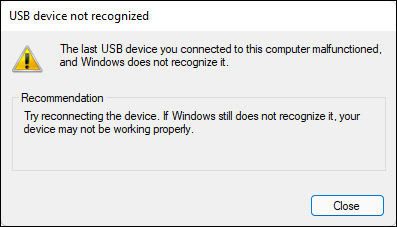
FIGURE 19-18: Windows doesn’t recognize what’s in your PC’s USB port.
Probable cause: Unfortunately, many culprits could be responsible here, ranging from a broken device to a bad driver to bad luck.
Solutions: First, try unplugging the device, waiting 30 seconds, and then plugging it into a different USB port. If that doesn’t work, visit the device’s support page on the internet: You may need to download and install some software before Windows can recognize the device. Or the device might simply be broken. Before assuming it’s broken, though, try restarting your computer by right-clicking the Start button, clicking Shut Down or Sign Out from the pop-up menu, and clicking Shutdown from the next menu.
Verify Your Identity on This PC
Meaning: Windows sends the message in Figure 19-19 when it wants to make sure you’re really you before letting you do something important.

FIGURE 19-19: Windows wants to make sure you’re really you.
Probable cause: This usually appears when you or somebody else has created a new user account on a PC. Until you can access everything normally, you need to prove your identity.
Solutions: Clicking the Verify button and entering your account password at this point almost always tells Windows to open the gates and let you work in peace.
We’re Not Allowed to Find You
Meaning: The Maps app in Windows wants to know your current physical location, as shown in Figure 19-20; Windows, in turn, wants to know whether you will allow that.
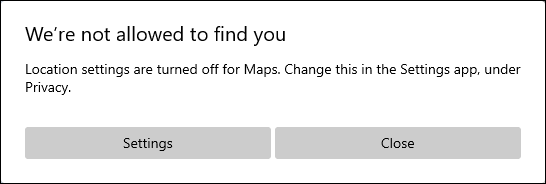
FIGURE 19-20: Click Settings and give the app permission to know your location.
Probable cause: A particular app needs your location to do something. In this case, the Maps app wants to know your location so it can display that information on the map.
Solutions: If you trust the app and feel comfortable letting it know where you’re currently sitting or standing, click Settings, which opens the app’s section in the Settings app. There, you can allow the app to access your location without it having to ask again. If you think the app is being too nosy, click Close or No. However, the app will probably ask for permission again the next time you open it.
You Don’t Currently Have Permission to Access This Folder
Meaning: If you spot the window in Figure 19-21, it means Windows won’t let you peek inside the folder you’re trying to open. A similar message appears when Windows won’t let you peek inside a file.
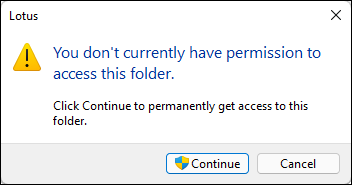
FIGURE 19-21: Find somebody with an Administrator account to open the folder or file.
Probable cause: The file or folder belongs to somebody with a different user account.
Solutions: If you hold an Administrator account, you can open files and folders from other people’s user accounts by clicking Continue. If you don’t have an Administrator account, however, you’re locked out.
Your Privacy Settings Blocked Access to Your Location
Meaning: Something in Windows is asking permission to know your current physical location, as shown in Figure 19-22, and Windows wants to know whether you want to allow that.
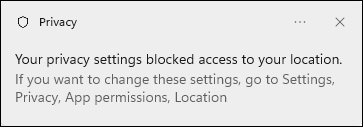
FIGURE 19-22: Click Settings and give the app permission to know your location.
Probable cause: Your Privacy settings in Windows 11 are set so that no apps at all are allowed to know your location.
Solutions: To change your Privacy settings, open the Settings app from the Start menu. Then head for the Privacy and Security section. There, you can pick and choose between what apps can access information that many people consider private. I cover the Settings app in Chapter 12.
